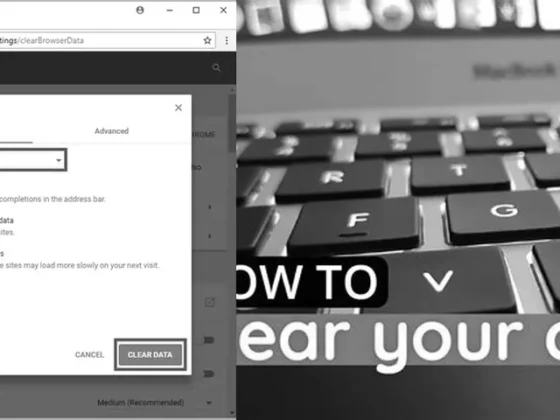How Can I Restore My Display Screen to its Normal State?: Are you tired of staring at a wonky display screen that’s giving you a headache? Well, fret no more! In this blog post, we’ll show you how to get your display screen back to normal in no time. Whether you’re dealing with resolution issues, screen orientation gone haywire, or just need some tips for better readability, we’ve got you covered. So sit back, relax, and get ready to say goodbye to those display woes once and for all. Let’s dive in and get your screen looking sharp again!
Understanding Display Resolution and Screen Orientation
Before diving into the steps of adjusting your display screen back to normal, it is essential to understand what screen resolution and orientation mean. The resolution of a screen refers to the number of pixels in each dimension that the screen can display natively. The higher the resolution, the more detailed the picture on the screen. Screen orientation, on the other hand, refers to the way in which a screen displays its contents, which is usually either landscape or portrait mode. Adjusting these settings helps you get the best visual experience and usability from your device.
Finding the Right Resolution for Your Screen
Choosing the right resolution for your screen is key to ensuring a clear and crisp display. The “recommended” resolution is typically the one that matches the native resolution of your screen, ensuring the best display clarity. To adjust your screen resolution in Windows 10:
- Right-click on the desktop and select Display Settings.
- Click on Advanced display settings.
- Select the Resolution drop-down menu.
- Choose the resolution marked as “(Recommended).”
- Click Apply to make the changes.
If the recommended resolution does not fix your issue, you can try other resolutions from the list until you find the one that restores your screen to normal.
Adjusting Screen Orientation
At times, your screen may appear sideways or upside down, which can be disorienting. To change your screen back to its normal view:
- Go to Settings > System > Display.
- Find the drop-down list next to Display orientation.
- Select your desired orientation, normally “Landscape” for regular use.
Once you have selected your preferred orientation, your display should return to normal.
Scaling for Better Readability
Another factor impacting your display screen’s appearance is the scale and layout settings. These settings adjust the size of text, apps, and other items on your screen, making them easier to read and interact with. To check or adjust this setting:
- Access the Display Settings as before.
- Under Scale and layout, check the setting under Change the size of text, apps, and other items.
- It is suggested to use the percentage marked as “(Recommended).”
If the recommended scaling does not meet your needs, you can try different percentages to find the one that suits you best.
Troubleshooting Screen Display Issues
If the recommended settings do not resolve your display issues, there could be various underlying causes such as outdated graphics drivers, incorrect display settings, or even hardware problems. Here are some troubleshooting steps you can follow:
Updating Graphics Drivers
Outdated or corrupted graphics drivers can cause display problems. To update your graphics drivers:
- Open Device Manager.
- Expand the section labeled Display adapters.
- Right-click on your graphics device and select Update driver.
- Choose to search automatically for updated driver software.
Windows will search for and install any available updates. If there are no updates found, you can check the manufacturer’s website for the latest drivers.
Checking Display Adapter Properties
Sometimes, incorrect adapter settings can cause screen size issues. To check these settings:
- Access the Advanced display settings as described earlier.
- Click on Display adapter properties for your display device.
- Under the Adapter tab, you can view the properties of your graphics card and monitor.
- Ensure that the settings here do not conflict with your desired resolution and refresh rate.
If you are unsure about these settings, consult the user manual for your monitor or the manufacturer’s support site.
Using Windows Troubleshooters
Windows includes a range of troubleshooters designed to quickly diagnose and automatically resolve various computer problems. To access the display troubleshooter:
- Go to Settings > Update & Security > Troubleshoot.
- Select Additional troubleshooters.
- Find and run the Display troubleshooter.
The troubleshooter will attempt to detect and fix any problems with your screen settings.
Considerations for Multiple Displays
If you are using multiple monitors, each screen can have its own resolution and orientation settings. Make sure to select the correct display before making adjustments if the changes do not seem to apply to the intended screen.
Final Thoughts
Display issues can be a nuisance, but by following the steps outlined in this guide, you can usually resolve them quickly and easily. Always start with the recommended settings and then adjust as necessary to suit your preferences and needs. If problems persist, consider seeking professional assistance as there may be a deeper hardware issue at play.
Remember, a clear, well-adjusted display not only improves your computing experience but also helps in reducing eye strain and increasing productivity. By taking the time to fine-tune your display settings, you ensure a more comfortable and efficient use of your computer.
FAQ & Related Questions about How Do I Get My Display Screen Back To Normal?
Q: How do I get my display screen back to normal?
A: To quickly revert your screen back to its normal size, you can select the recommended resolution. In the display settings menu, scroll down to the “Resolution” option and click on the drop-down menu. Look for the resolution marked as “Recommended” and select it.
Q: How do I change my screen back to normal view?
A: Select Settings > System > Display, and choose a screen orientation from the drop-down list next to Display orientation.
Q: How do I get my screen back to normal size in Windows 10?
A: Open Start, select Settings > System > Display. Under Scale and layout, check the setting under Change the size of text, apps, and other items. We suggest you use the percentage marked “(Recommended).” If that doesn’t solve your problem, under Resolution, select a new value.
Q: How do I get my computer back to full screen?
A: On a desktop computer, simply pressing the ‘F11’ key will usually open an application in full screen mode. For web browsers, you may need to click on an icon in the corner to enter this mode.
Q: How do I fix my monitor screen?
A: Follow these quick steps to resolve display issues: 1) Perform a hard reset, 2) Check if the monitor is working, 3) Reconnect the video cable between the monitor and the computer.


